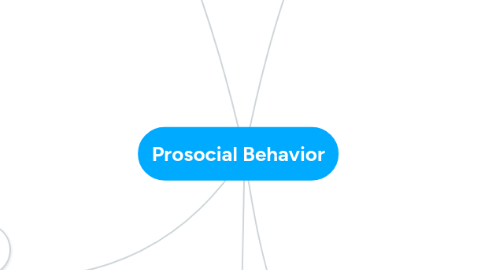
1. When Do We Help?
1.1. Bystander Intervention Model
1.1.1. 1. Notice that something unusual is happening
1.1.2. 2. Correctly interpret the event as an emergency
1.1.3. 3. Decide whether it is your responsibility to provide help
1.1.4. 4. Decide if you have the ability to act
1.1.5. 5. Make final decision to help or not
1.2. Bystander Effect
1.2.1. Decrease likelihood of helping when bystanders increase (unless victim is ingroup member)
1.2.2. Explanation: 1. Diffusion of responsibility 2. Pluralistic ignorance (Dependence on others to provide cues)
1.2.3. Audience inhibition effect Fear that others will negatively evaluate them if they intervene situation which is not emergency
1.3. Identifiable Victim Effect
1.3.1. Feelings of helping are bigger when: one individual, identifiable > a large group of anonymous individuals (statistical victims)
1.3.2. Statistical victims: abstract, analytical thinking rather than emotional
1.3.3. Effects disappear when ppl are aware of it
2. Who Do We Help?
2.1. Evolutionary Explanations
2.1.1. Kin selection theory
2.1.1.1. More likely to help blood relatives
2.1.2. Reciprocal helping
2.1.2.1. Expectation of help in future
2.2. Similar Others
2.2.1. More likely to help those who is similar to us
2.2.2. Races: more complex, aversive racism
2.3. Helping Outgroups – Defensive Helping
2.3.1. To reduce the threat they pose to ingroup’s status or distinctiveness
2.3.2. Explanation: 1. Makes them seem dependent on our help 2. Increases perceptions of incompetence of outgroup
2.4. Deserving Others
2.4.1. More likely to help someone if we attribute the cause of their problem to external, uncontrollable factors
2.4.2. Victims of natural disasters
3. Reactions to Receiving Help
3.1. Threat to Self-Esteem
3.1.1. Self-supporting help: Provides real benefits
3.1.2. Self-threatening help: Implies inferiority-superiority relationship
3.1.3. Less likely to seek help from similar others (social comparison)
3.2. Perceived Motivation
3.2.1. Reactions to being helped depends on perceptions of the motivation of the helper
3.2.2. Autonomous motivation (发自内心的帮忙)
3.2.3. Controlled motivation (被逼的帮忙)
4. Helping
4.1. Types of Helping
4.1.1. Egoistic 自我Helping
4.1.2. Altruistic 利他 Helping
4.2. Learning Helping Behavior
4.2.1. Observational learning
4.2.1.1. Preaching教导 generosity works in the long term – even if behavior is selfish
4.2.1.2. Sleeper effect (effects of a persuasive message are stronger when more time passes)
4.2.2. Reinforcement
4.3. Gender & Helping Behavior
4.3.1. Men are more likely to help than women when: female, potential danger, nonroutine act
4.3.2. Women are helpful when: emotional support, volunteering
5. Why Do We Help?
5.1. Norm
5.1.1. Norm of reciprocity
5.1.1.1. We should help those who help us
5.1.2. Norm of social responsibility
5.1.2.1. We should help others who are in need and dependent on us
5.1.3. Norm of social justice
5.1.3.1. We should help only those we believe deserve our assistance (based on socially desirable characteristics)
5.2. Empathy
5.2.1. Empathic joy hypothesis
5.2.1.1. Helpers motivated by positive responses exhibited by those they help
5.2.2. Empathy-Altruism Hypothesis
5.2.2.1. Experiencing empathy produces an altruistic motive for helping
5.2.2.2. Two responses: 1. Personal distress : Unpleasant state of arousal by seeing victim's situation, escape if got chance 2. Empathic concern: no escape, more likely to help
5.3. Good Mood vs Bad mood
5.3.1. Good mood more helping
5.3.2. Bad mood:
5.3.2.1. guilt increases likelihood of helping
5.3.2.2. Extremely negative moods decreases likelihood of helping
5.3.2.3. Negative state relief model: Helping others then feel more happy than negative mood when benefits are high, costs are low
